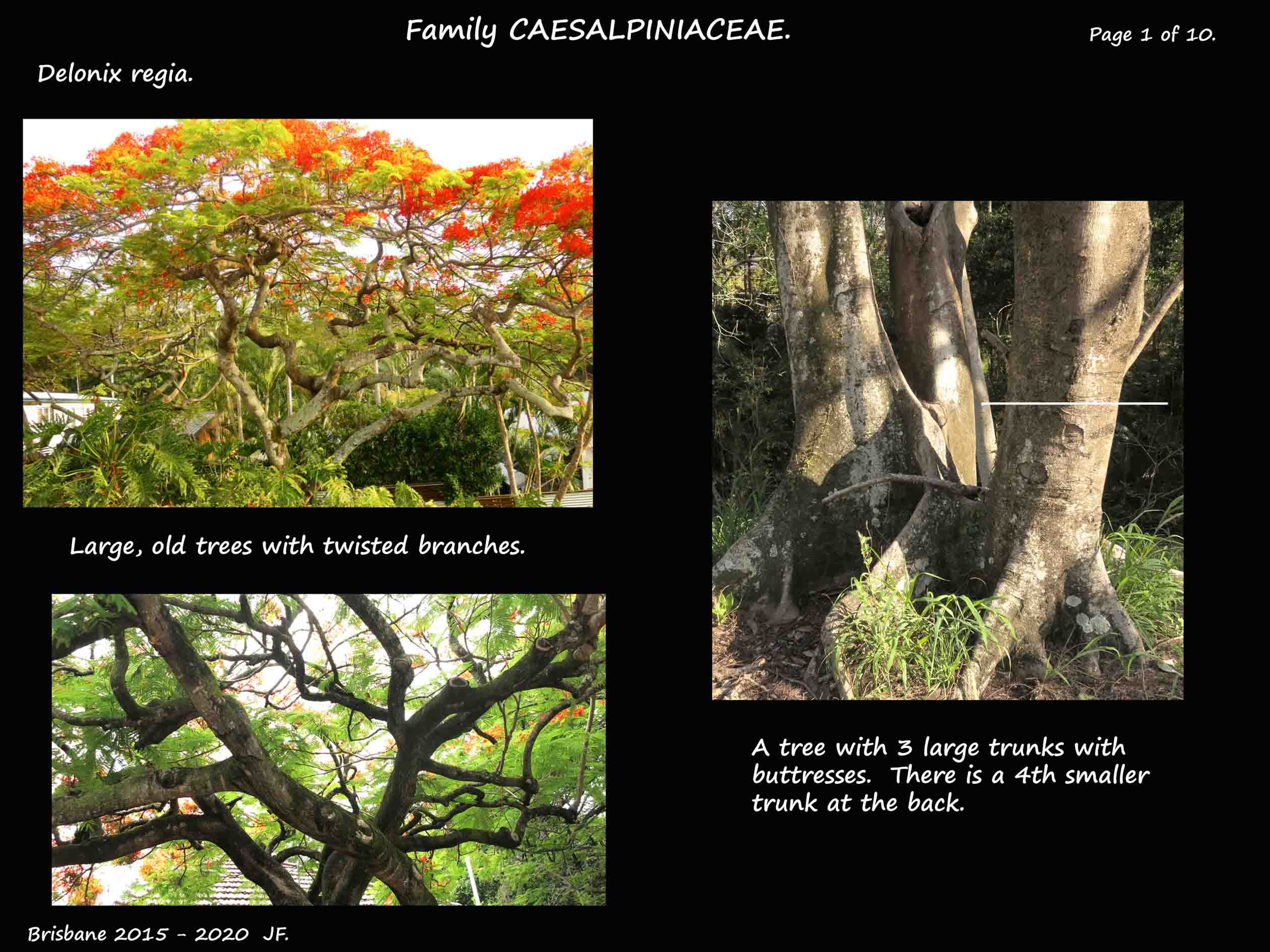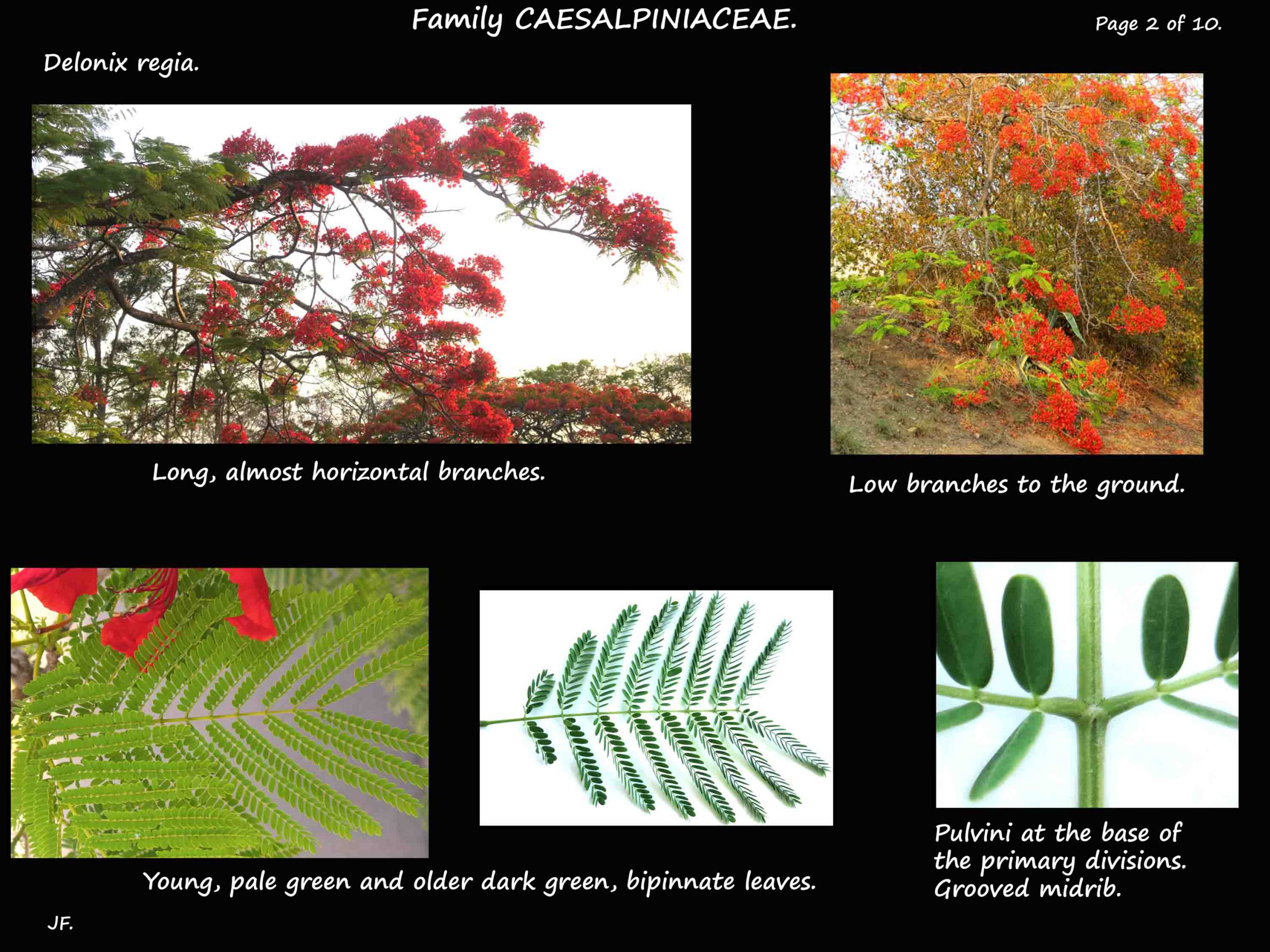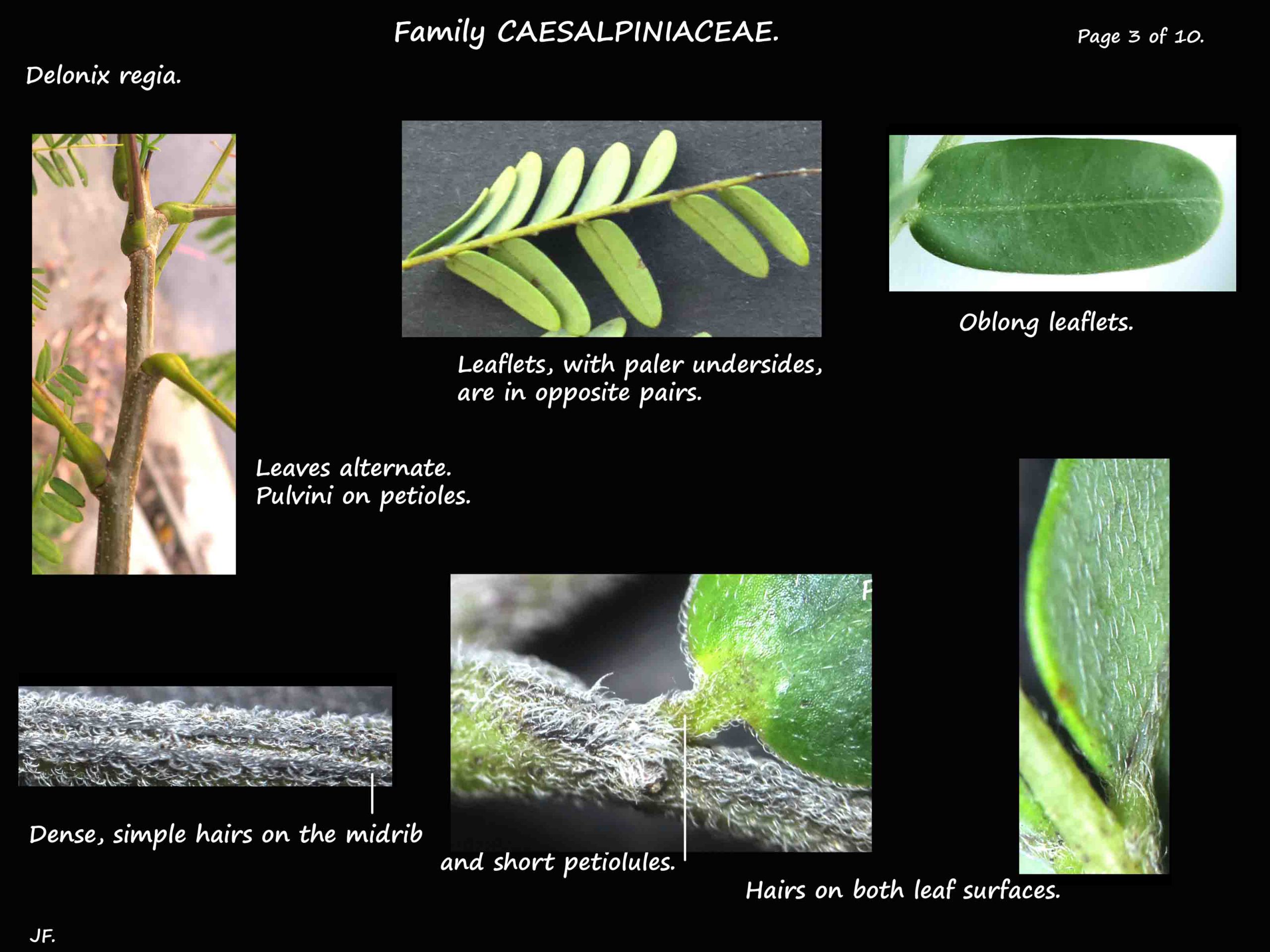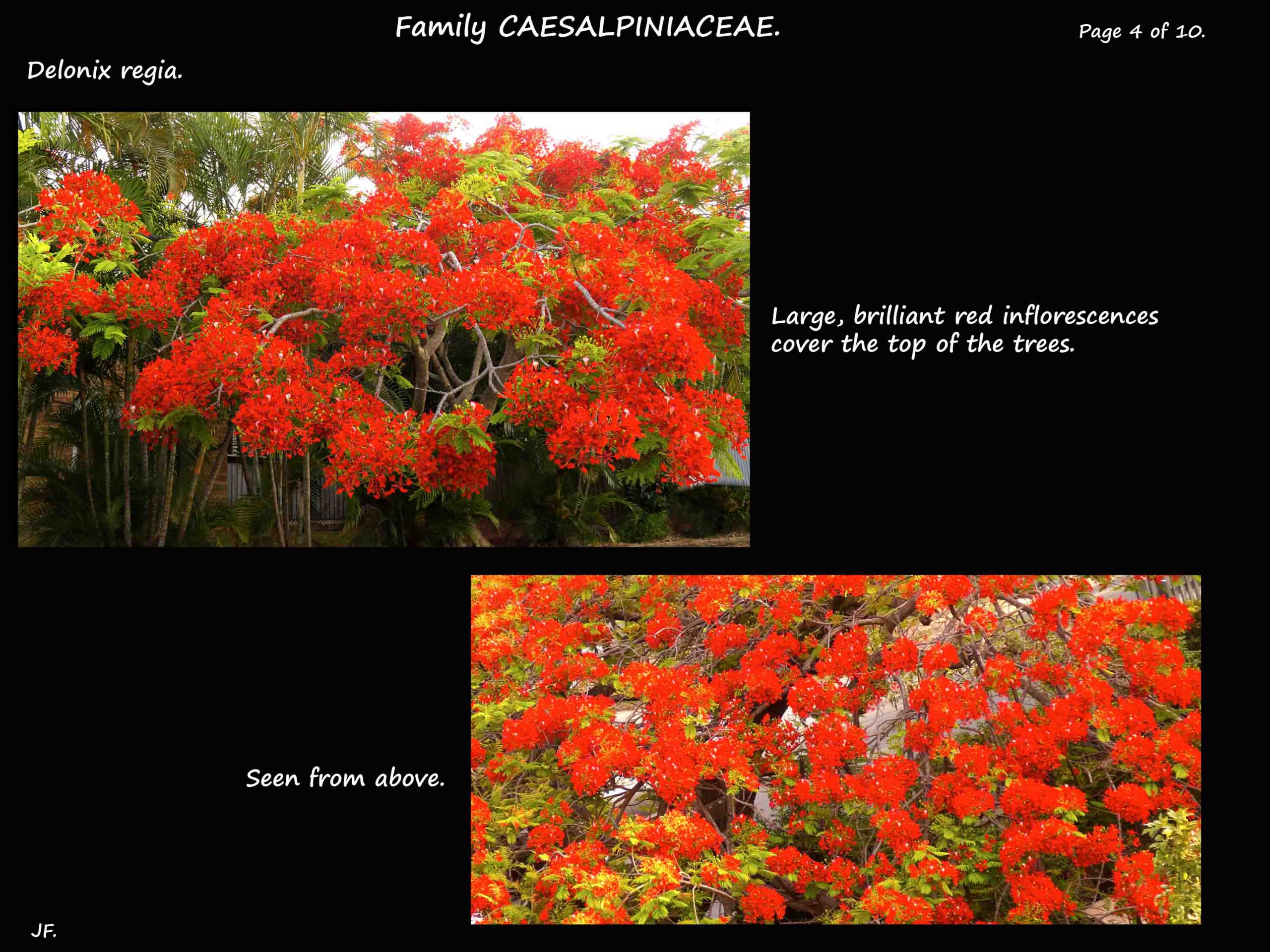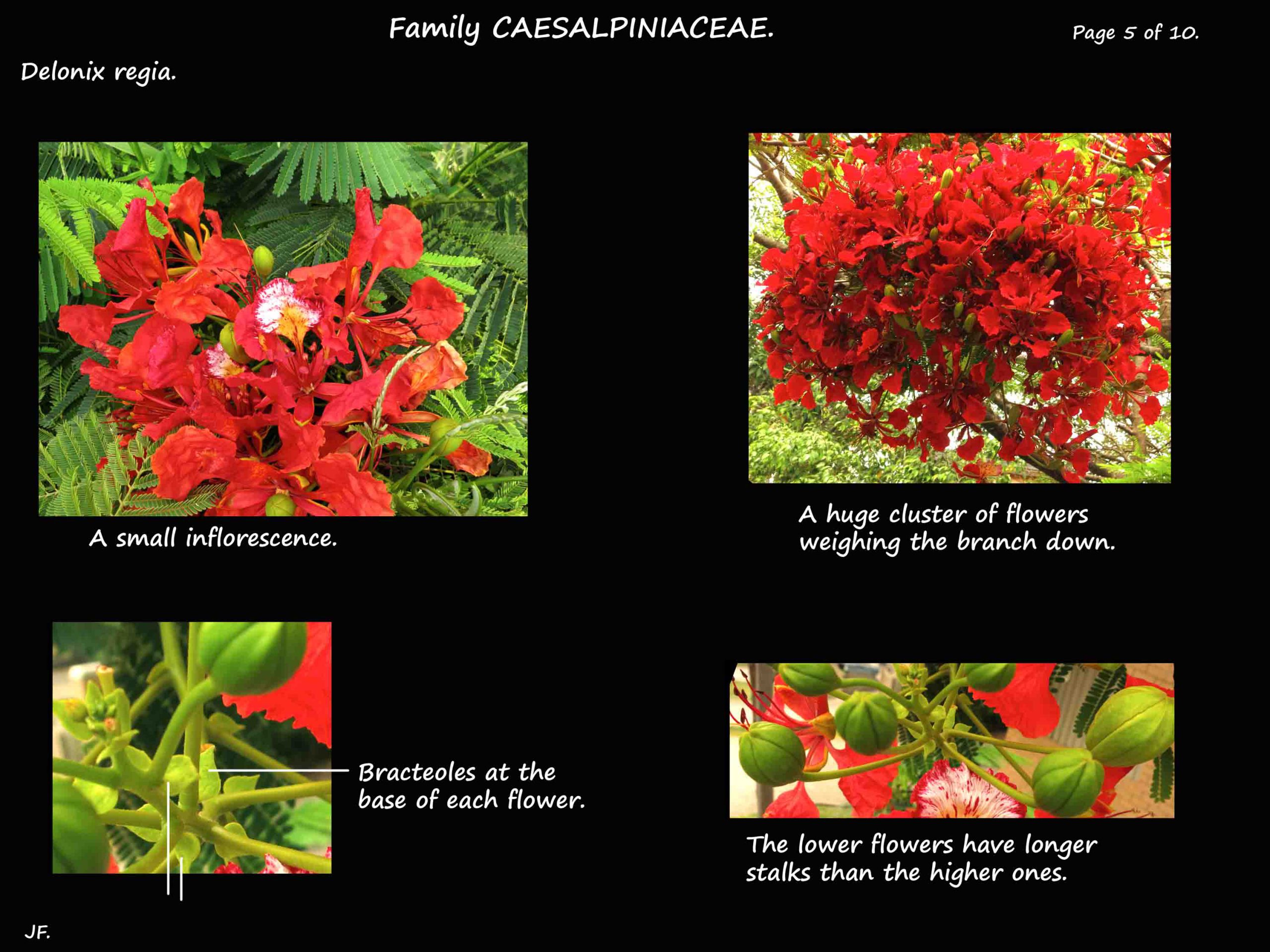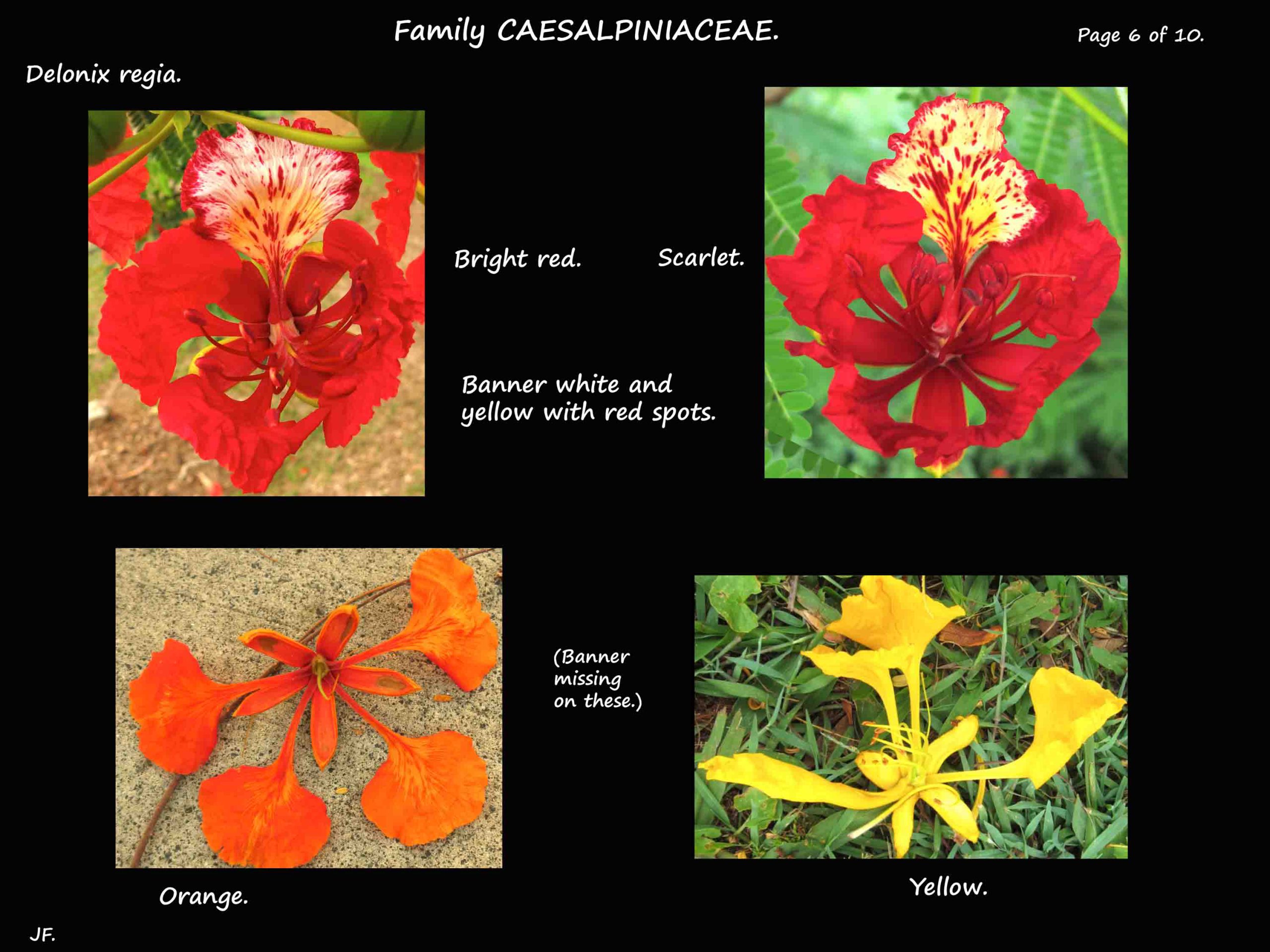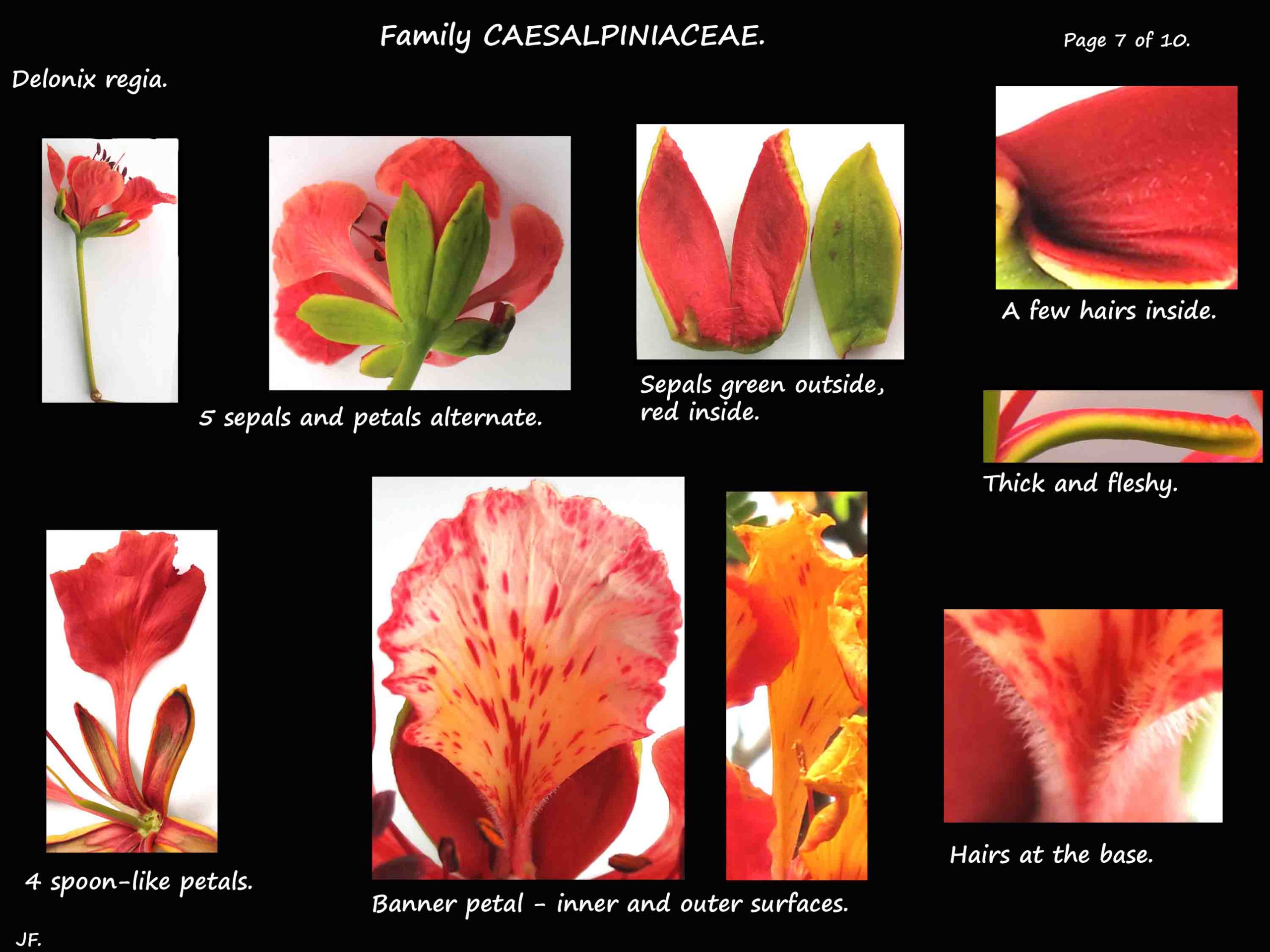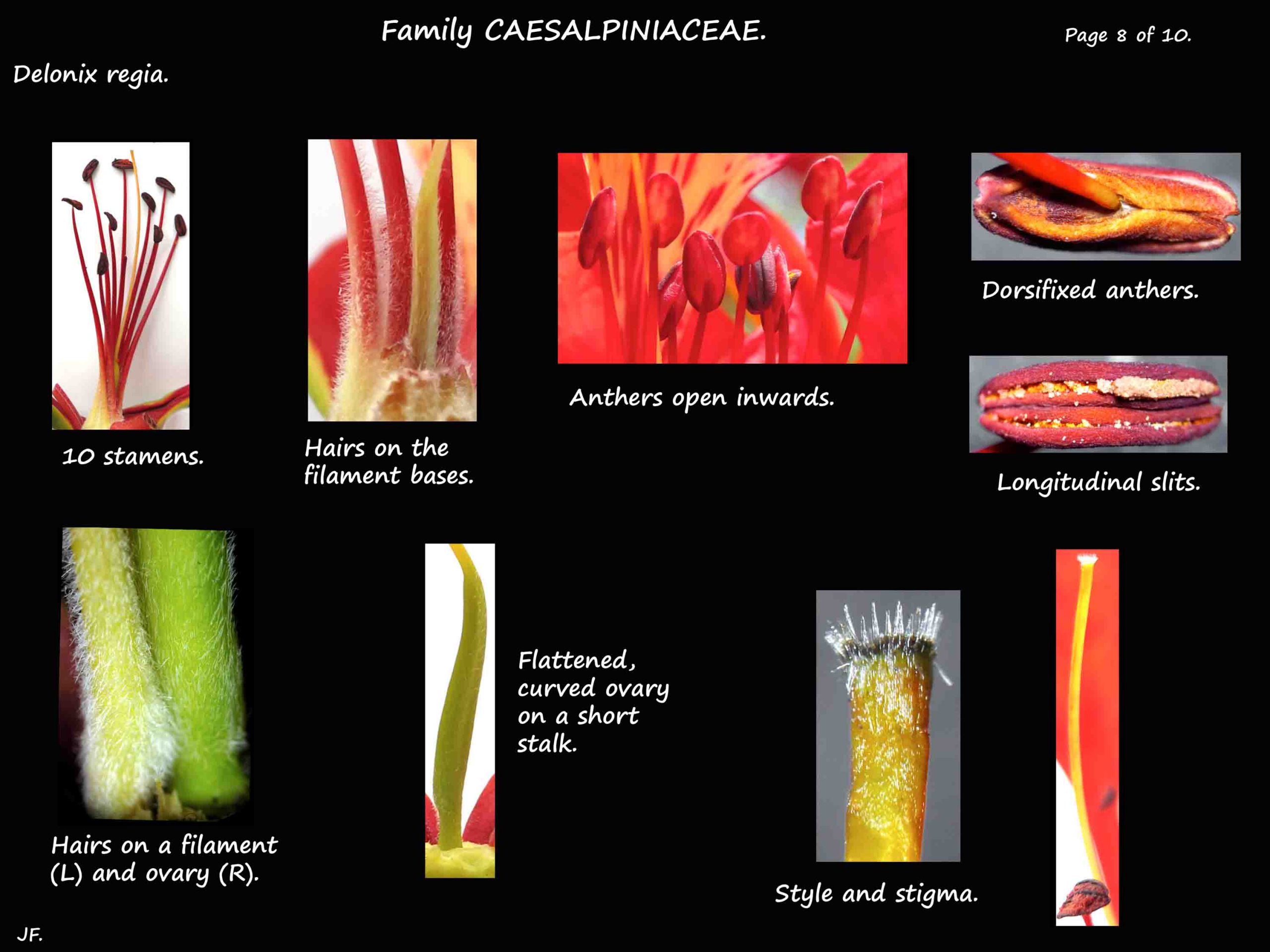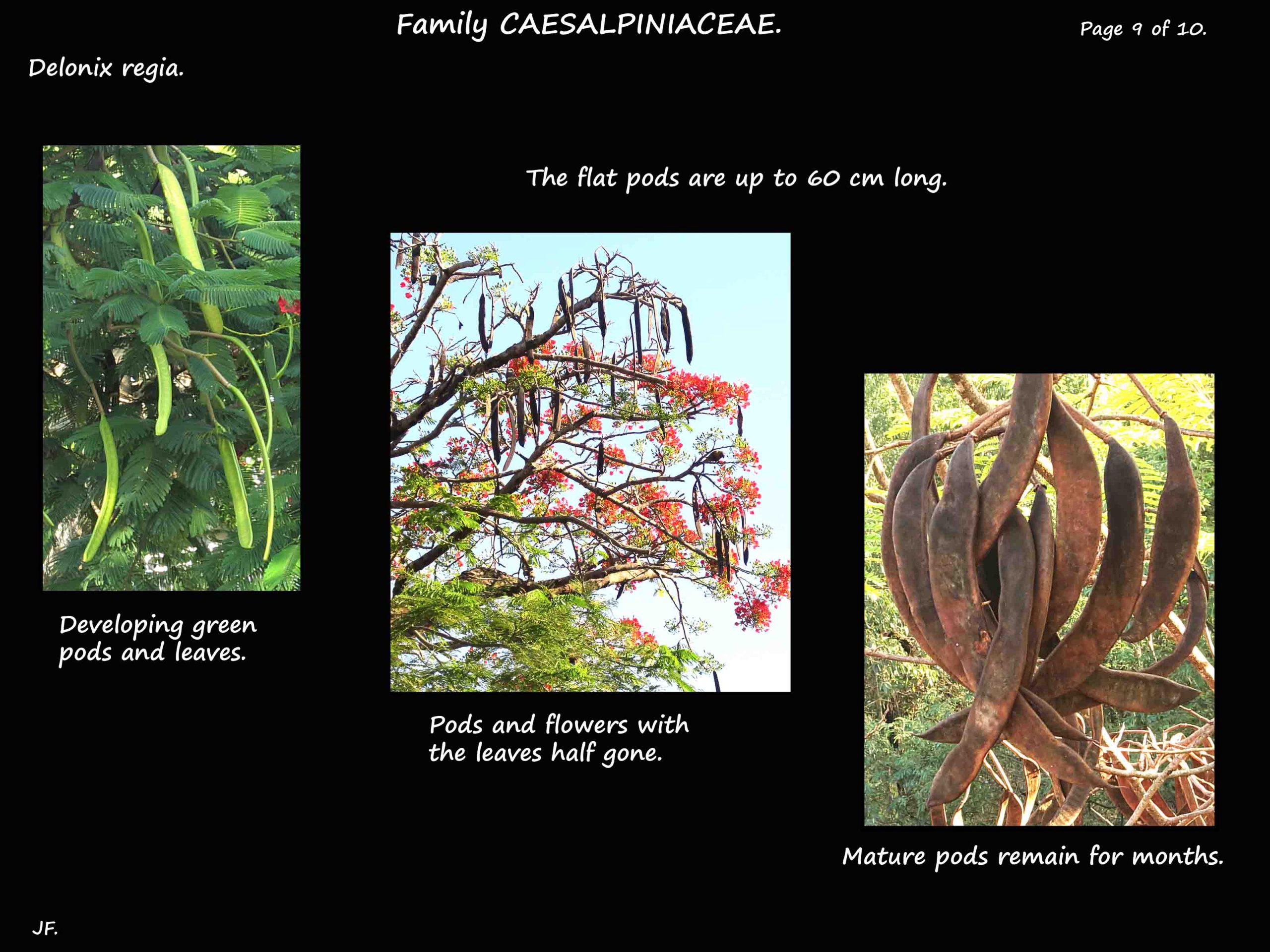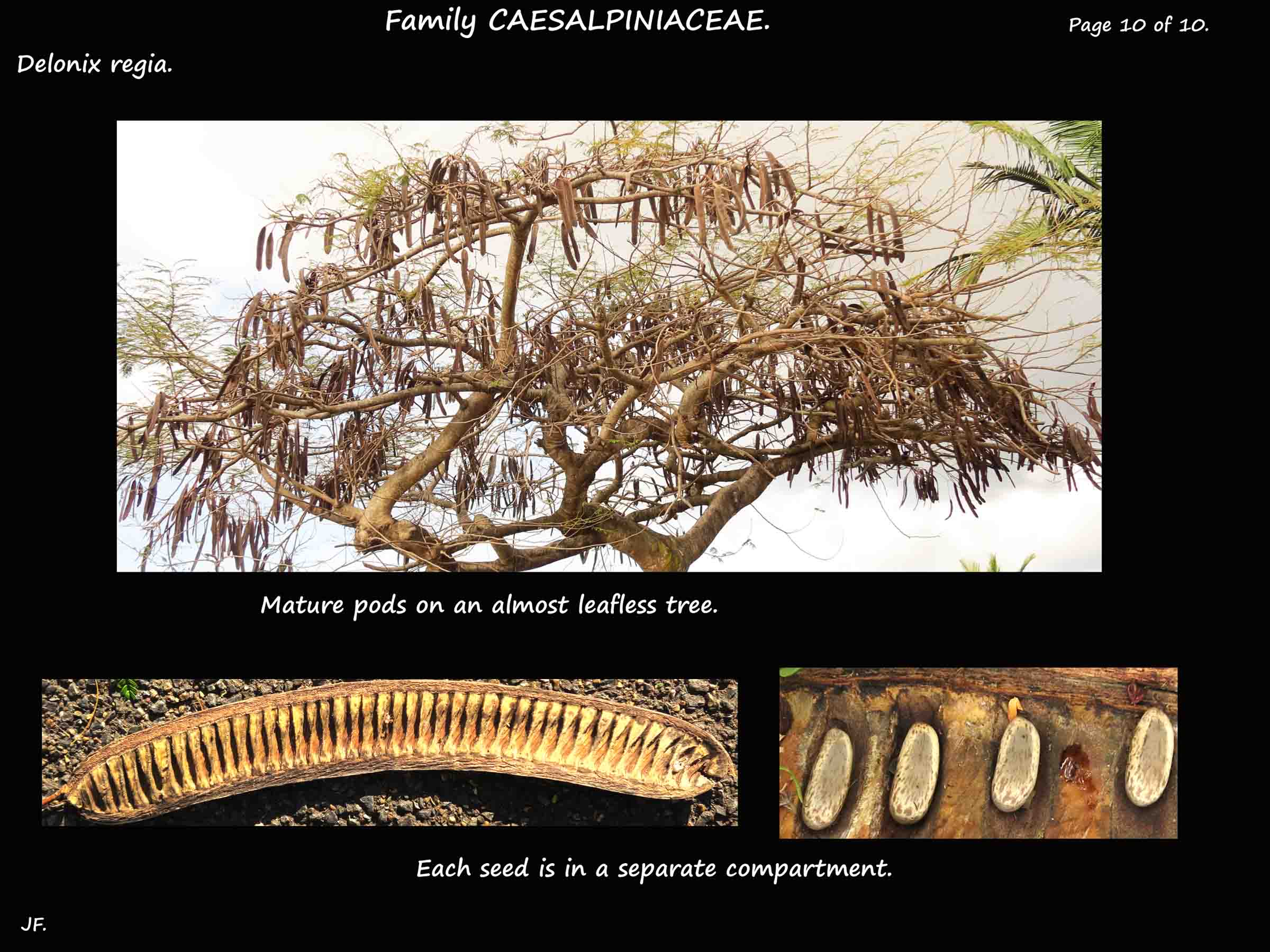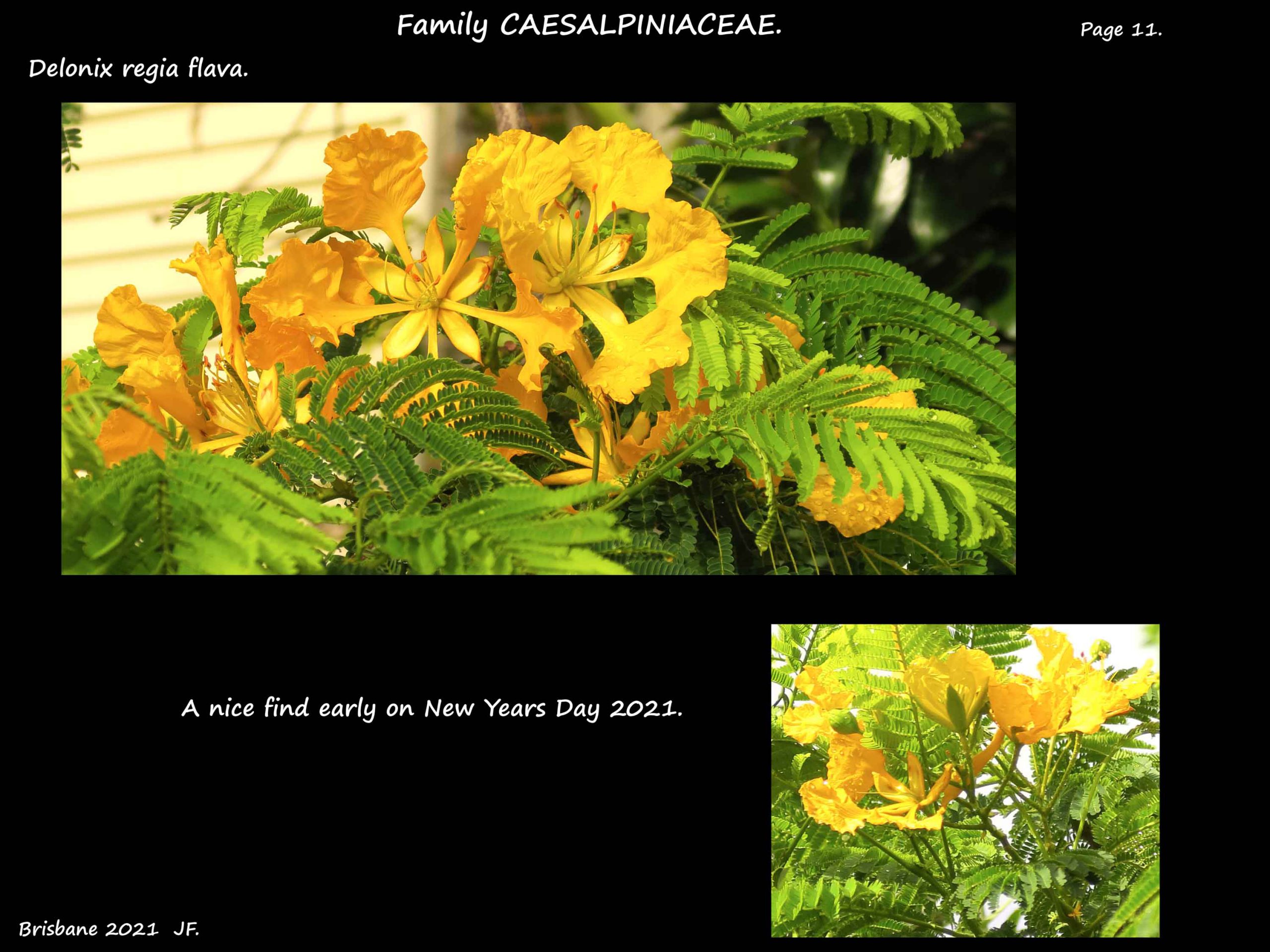Delonix regia.
Family Caesalpiniaceae (subfamily Caesalpinioideae in Fabaceae s.l.).
The Delonix genus has 10 species of tropical and subtropical trees.
Native to Africa and Madagascar some are widely naturalised.
The Flame tree or Royal Poinciana is a common street and garden tree in Brisbane.
Trees are usually deciduous here but can be evergreen depending on the season.
They are often seen around 9 m high but can be up to 18 m.
They often have multiple trunks and a large buttressed base up to 2 m across.
They have a rounded crown and long horizontal branches.
Trees are often wider than high.
The young bark is smooth and grey then becomes rough and spotted.
The alternately arranged leaves are up to 50 cm long.
On petioles with a basal pulvinus they are bipinnate (twice divided).
There are around 20 pairs of primary divisions or pinnae.
Each of these has 10 to 20 opposite pairs of leaflets.
The oblong leaflets are 1 to 1.5 cm long.
Young leaves are a bright, pale green but older ones are darker.
The inflorescences are at, or near, the ends of the branches.
Each has stalked flowers branching off a central axis.
The lower flowers are on longer stalks than the upper ones.
This gives the inflorescence a slightly rounded or flat-topped appearance.
Inflorescences of bright scarlet to orange-red flowers can cover the whole top of a tree.
Flowers, up to 10 cm across, have parts in 5’s.
The 5 elliptic sepals are thick and fleshy and spread out sideways.
They are green outside, red and hairy inside and the edge is often yellowish.
There are 4 spoon-like petals with long, narrow bases and a wrinkled, round end.
They can be up to 8 cm long and spread outwards.
The 5th (banner or standard) petal at the top is larger and upright.
It also has a narrow base and a round end that is wrinkled with a ruffled edge.
It is white and pale yellow with red spots.
The bases or the petals have hairs inside.
Delonix regia flava is a variety that has yellow flowers.
There are 10 free stamens on long, red filaments with red anthers.
The dorsifixed anthers open via longitudinal slits.
There are hairs on the base of the filaments.
The superior ovary is flattish, green and hairy.
The apical style is smooth and has a simple stigma with longish papillae.
The fruit are pods up to 60 cm long that ripen from green to brown and woody.
They can be straight or slightly curved.
There can be over 40 flattish, ovoid seeds in separate compartments.
J.F.
